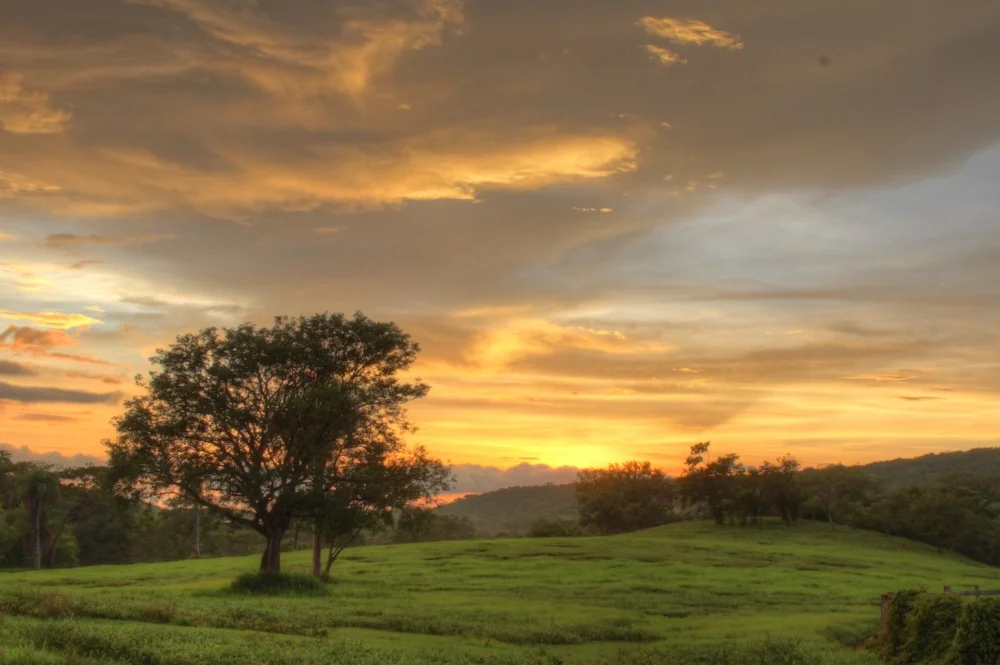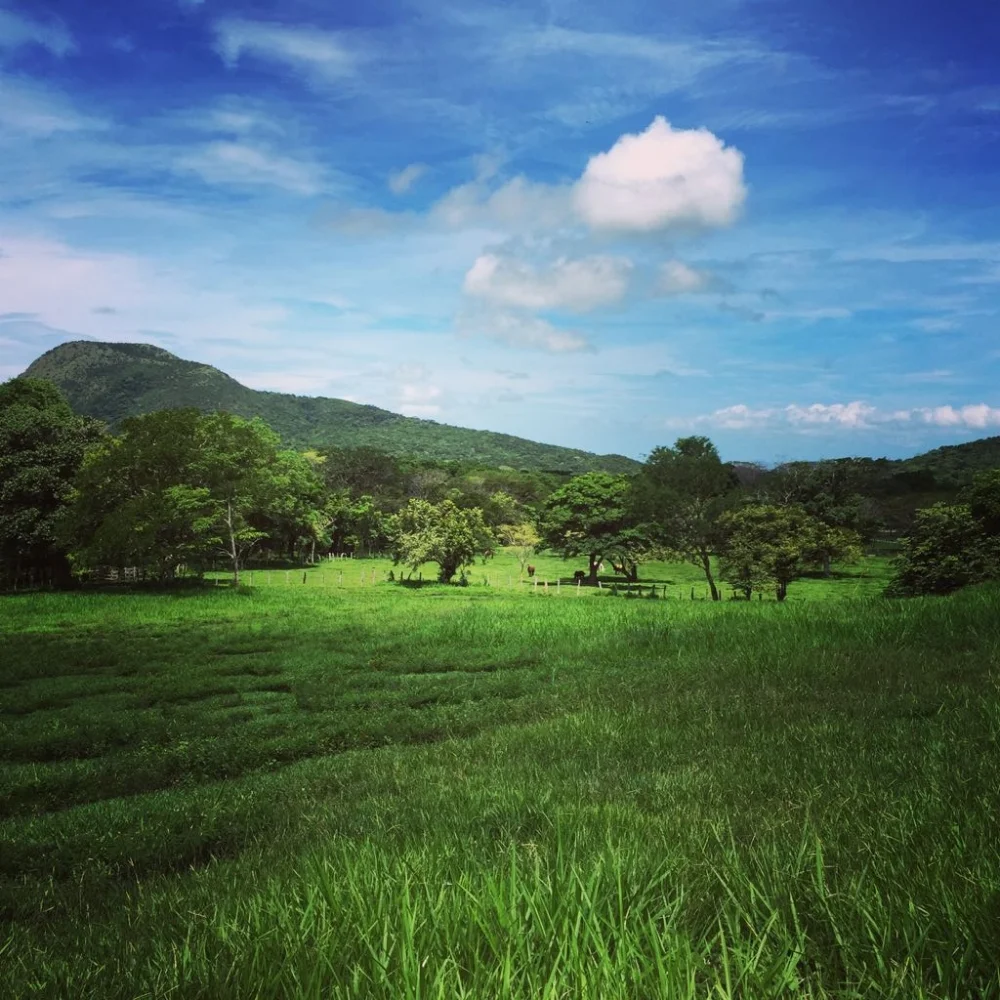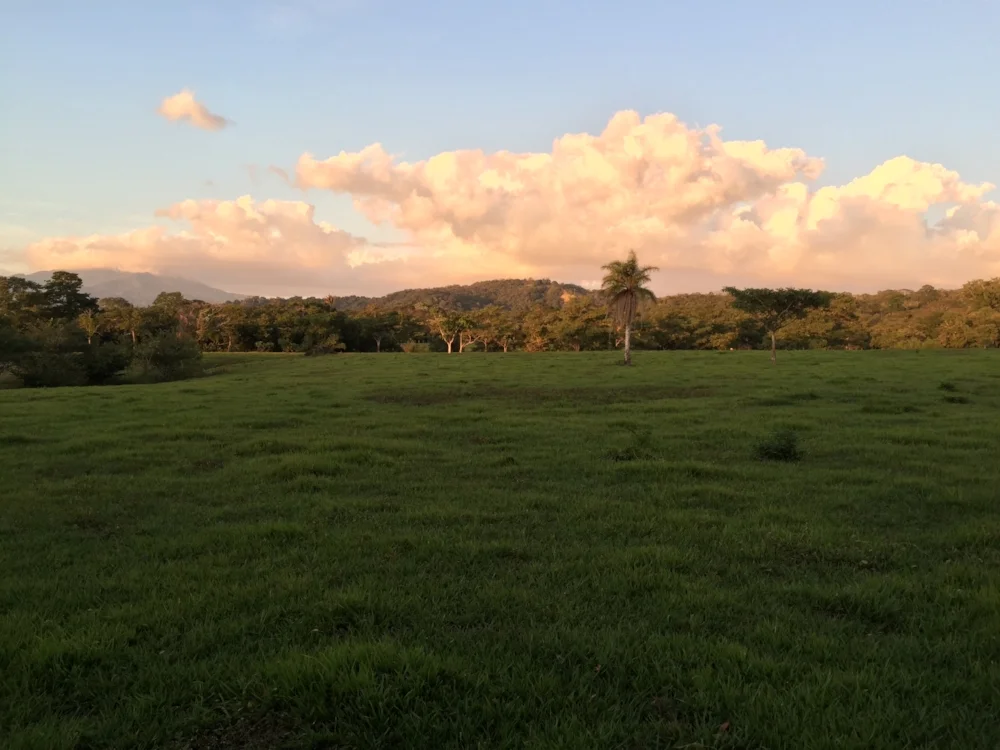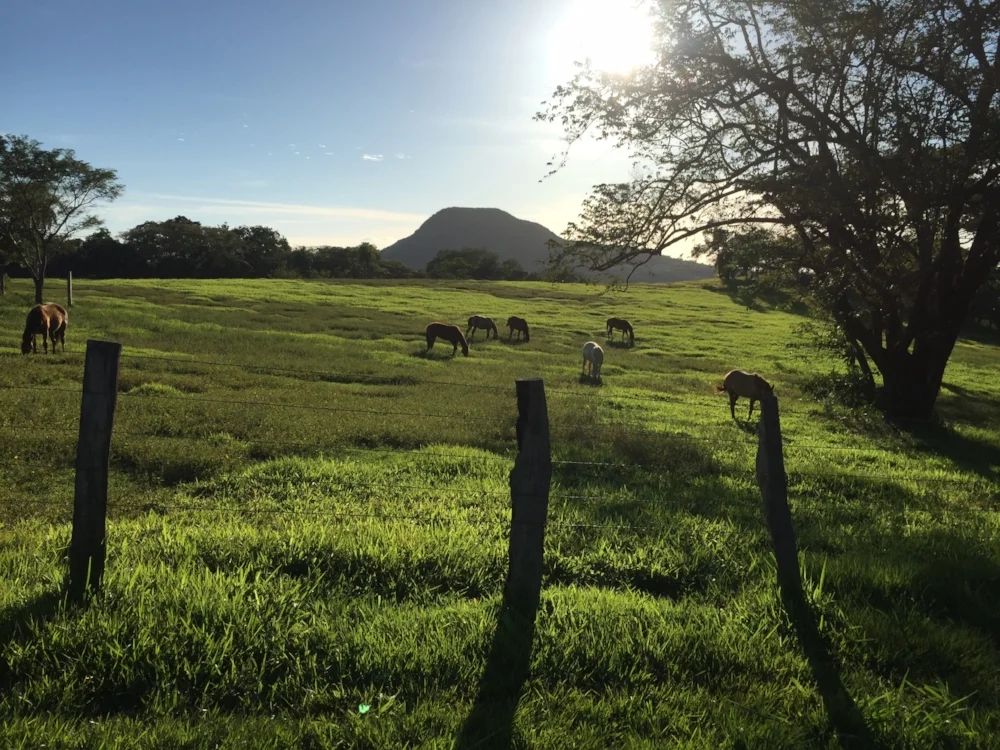a long-term, large-scale regenerative farm in costa rica
Objective: to have 100% ground cover 100% of the time.
Building soil fertility and increasing biodiversity has allowed us to go beyond organic. By improving soil structure and microbial activity, we have eliminated the need for chemical fertilizers, pesticides, or herbicides. Our land absorbs more rainfall and retains moisture longer due to the increased organic material and porosity in our soils. Furthermore, complete ground cover and as many trees as possible reduce evaporation. We keep our grasses and forage in a growing state through managed intensive grazing. Maximizing growth makes for healthier plants and animals, improves nutrient availability and transport to plants, while reducing atmospheric carbon dioxide and storing carbon deep in the soil profile.
Hacienda las Imagenes has participated in FONAFIFO's National Forestry Financing Fund and Environmental Services (PSA) Program for 7 years. The PSA program has a direct impact on environmental protection and improvement. The Costa Rican Ministry of Environment and Energy helps property owners finance the management, preservation and sustainable development of forest resources and biodiversity. As this program evolves into agroforestry, a carbon neutral Costa Rica will become a reality.
Sustaining life as we know it requires green plants photosynthesizing on all possible surfaces of the Earth. In other words, increasing photosynthetic capacity by maximizing ground cover.
Regenerative practices enable us to increase the photosynthetic rate. We are able to fast-track the draw-down of atmospheric carbon dioxide. Through microbial interactions, carbon and nitrogen are processed into the soil. Improving soil fertility allows for increased soil organic matter, water absorption, and nutrient acquisition. The amount of time a plant can photosynthesize within a given growing season is extended.
When a microbial bridge has been established between plants and soil biology, entirely different conditions develop:
Atmospheric components connect to soil components.
The amount of energy being transferred into the soil is intensified.
A functioning biological cycle is established.
Soil health, human health, and production will all improve while we are in the process of mitigating adverse climatic changes.
We offer consulting on land use, livestock, and forage production.
Please feel free to contact us!
Further Reading:
Virtual Booth: Potential Benefits of Agroforestry in the Central American Dry Corridor (2021 - 2022) - International “4 per 1000” Initiative on soils for food security and climate.
Video (above): Regenerative Agriculture Costa Rica 2020 - Presented at the Tropical Agriculture Conference Belize.
PDF: Climate Change & Regenerative Agriculture (2019) - A mission for the 21st century.
PDF: Integrating Livestock into Agroforestry (2018)
PDF: Building Soil Fertility & Carbon Sequestration (2015) - Presented at the 8th National Congress of Soil, in association with 2015 International Year of Soils and the Costa Rican Association of Soil Science.













